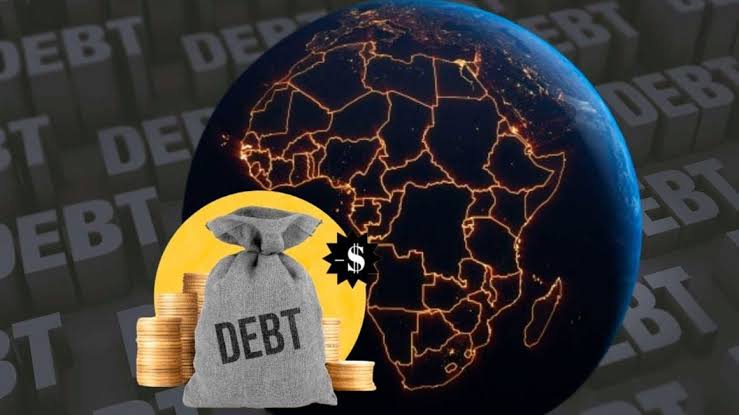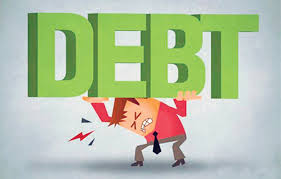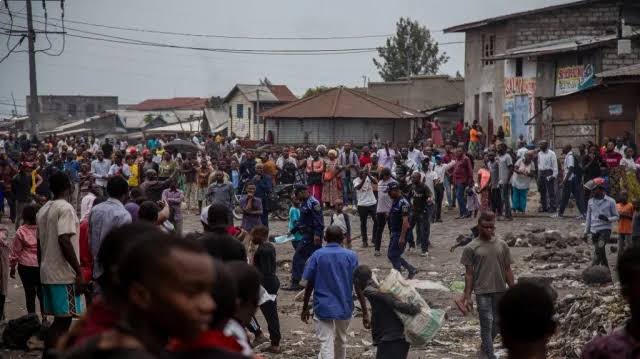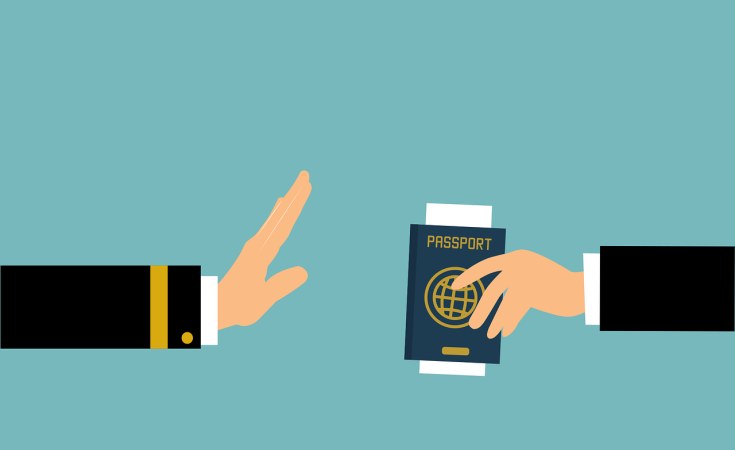The African Debt Spiral: Avoiding Dependence On Foreign Aids And Loans

INTRODUCTION: The Loans Are Coming Due
In 2020, Zambia became the first African country to default on its sovereign debt during the pandemic. Two years later, Ghana followed, seeking an IMF bailout to restructure its crumbling finances. Across the continent, the red flags are flying and the loans are coming due.
For many African governments, borrowing once offered a lifeline: to build roads, power plants, and cushion citizens from global shocks. But as global interest rates rise, currencies weaken, and repayment schedules tighten, that lifeline is beginning to choke.

Photo Credit; DailyTimes
What began as necessary borrowing has quietly morphed into a debt spiral, a pattern of refinancing, austerity, and dependency that echoes eerily of Sri Lanka’s financial collapse in 2022.
This isn’t just a numbers game. It’s a looming crisis of sovereignty, governance, and survival.
Because when loans outlive the value they were meant to create, it's not just economies that collapse, it’s trust, stability, and public services that vanish with them.
HOW WE GOT HERE: The Debt Trap Unpacked
A. The Surge in Borrowing
The roots of Africa’s debt crisis lie not just in how much countries borrowed, but why, how fast, and from whom.
In the wake of the COVID-19 pandemic, African governments borrowed aggressively to plug budget holes, support strained health systems, and keep their economies afloat. But the borrowing frenzy didn’t start there, it accelerated after the 2014 commodity price crash, when oil and mineral revenues dried up, leaving many resource-rich economies scrambling for liquidity.
Compounding the issue was a weak tax base across most of the continent. With limited internal revenue generation, countries leaned harder on external finance to fund everything from public wages to ambitious infrastructure dreams. The result? A debt profile that ballooned rapidly, without the productive economic growth to match.
B. Poor Governance and Misallocation
It wasn’t just the volume of borrowing, it was where the money went.
In too many cases, loans were channeled into projects with little return, corruption made matters worse. Billions in borrowed funds were unaccounted for and invested in projects that were never completed.
Rather than investing in agriculture, education, or local industry, sectors that create sustainable growth, governments often prioritized political optics over economic logic.
The result? Piling debt without productive assets to show for it.
WHO OWNS AFRICA’S DEBT?
A. Traditional vs. New Creditors
For decades, Africa’s debt was largely owed to multilateral institutions like the International Monetary Fund (IMF) and the World Bank. These “traditional” lenders offered concessional loans, money with low interest rates and long repayment terms, often tied to economic reforms.
But over the past two decades, the creditor landscape has drastically shifted.
Today, China, private bondholders, regional development banks, and bilateral partners like Turkey and the Gulf states play an increasingly dominant role. Countries now borrow not just from Washington, but from Beijing, London, Dubai and the open global bond market.
This patchwork of lenders has created a new problem: fragmentation.
Unlike the Paris Club system that coordinated Western creditor policies, there is no unified platform for Africa’s diverse debt partners. The result? Delays, confusion, and prolonged uncertainty.
B. China’s Role
Perhaps the most debated player in Africa’s modern debt story is China.
Through the Belt and Road Initiative (BRI), China has poured billions into African infrastructure, roads, railways, power plants, and ports. In countries like Angola, Kenya, Ethiopia, and Zambia, Chinese loans have fueled large-scale projects that would’ve been difficult to fund elsewhere.
But these deals are often cloaked in secrecy.
Many come with confidentiality clauses, making it hard for civil society or even legislators to assess the true cost or repayment terms. Critics argue that this opacity enables “debt-trap diplomacy,” where China uses unsustainable loans to extract strategic concessions, like control over key assets in the event of default.
Still, as China becomes one of Africa’s biggest creditors, questions around sovereignty, accountability, and the true cost of development are growing louder.
THE COST TO THE PEOPLE: Austerity And Anger
When nations fall into debt distress, it’s not just governments that feel the pinch, both it’s citizens feels the brunt. For many African countries grappling with economic fallout, the most immediate impact of the debt crisis is not on balance sheets, but on livelihoods.

Photo Credit: DhakaTribunes
A. IMF Conditions and Economic Pain
Debt doesn’t disappear; it gets renegotiated and often, those negotiations come with strings attached.
To secure new loans or debt relief from the IMF or World Bank, governments are frequently required to implement structural adjustment policies: harsh economic measures designed to restore fiscal balance but often at great social cost.
The usual suspects include:
Public sector layoffs, shrinking already fragile civil service structures.
Fuel subsidy removals, causing inflation.
Currency devaluation, which makes imports more expensive and drains purchasing power.
VAT hikes and new taxes that hurt consumers the most.
Ghana’s economic crisis in 2023 triggered protests across Accra after inflation spiked and the cost of basic goods became unbearable. For many, these reforms feel less like medicine and more like punishment for policies they didn’t design.
B. Service Collapse
Perhaps the most devastating cost of austerity is the erosion of public services. As more of national budgets are redirected to servicing debt, some countries spending up to 40–60% of revenue on debt payments, what’s left for hospitals, schools, and roads is minimal.
When austerity bites, it doesn't just create economic pain, it breeds anger, frustration, and political instability. And in a continent where over 70% of the population is under 30, that unrest has the potential to spark larger movements of resistance, rejection, and even regime change.
THE WAY OUT: Escaping The Spiral
Africa’s debt crisis is not destiny, it’s a consequence of choices, systems, and silence. But the continent also holds the tools to chart a different course. Escaping the spiral will require a shift from reactive borrowing to proactive governance, innovation, and solidarity.
A. Transparent Borrowing
One of the biggest drivers of unsustainable debt is secrecy. Many African governments sign loan deals with vague terms, undisclosed interest rates, or collateral clauses that mortgage national assets—without public scrutiny or parliamentary approval.
The solution? Shine a light.
Create public loan registries that track every external debt agreement—who it’s with, what it’s for, and how it will be repaid.
Mandate parliamentary debates and approvals before major borrowing decisions.
Enable civil society and media oversight, ensuring that the public has access to clear information and can hold leaders accountable.
Transparency doesn’t scare away investors—it builds trust.
B. Domestic Resource Mobilization
Africa cannot borrow its way to prosperity. It must fund its future from within.
This means strengthening tax systems to ensure that the ultra-wealthy and corporations pay their fair share, while reducing over-reliance on value-added taxes that punish the poor. Governments must also clamp down on illicit financial flows, which cost the continent more than $88 billion annually in lost revenue.
Crucially, it’s time to rethink spending priorities and focus more on infrastructure that boosts productivity, such as irrigation, logistics, and tech ecosystems.
C. Regional Solidarity and Innovation
Africa's fragmentation has made it easy for lenders to dictate terms. But what if the continent negotiated together?
Pan-African financial institutions like the African Development Bank and the African Export-Import Bank can take the lead in offering alternative sources of finance.
A unified African debt negotiation bloc could resist exploitative terms and demand restructuring frameworks that protect people, not just creditors.
Countries can also embrace innovation: from green bonds to debt-for-nature swaps that exchange repayment obligations for climate resilience and biodiversity projects.
The path out of the debt trap won’t be easy—but it exists.
And it starts with a commitment to courage, cooperation, and a vision rooted in Africa’s own priorities—not someone else’s balance sheet.
CONCLUSION: Debt Isn’t Our Destiny—If We Choose Differently
Africa stands at a defining crossroads. The continent’s rising debt isn’t just a number on a spreadsheet it’s a mirror reflecting decades of decisions made in dark rooms, with little transparency and even less long-term planning.
But it doesn’t have to end in default or despair.
Economic collapse isn’t inevitable, complacency is.
This generation of Africans, connected, informed, and increasingly vocal, must hold leaders accountable for the fiscal decisions made in their name. They must demand public loan disclosures, citizen participation in budgeting, and investments that speak to the future: education, innovation, green infrastructure, and health.
Because at its core, the debt crisis isn’t just about economics.
It’s about justice.
It’s about whether tomorrow’s children will inherit opportunity—or obligation.
“Debt isn’t a crime, but making the next generation pay for today’s silence might be.”
Africa doesn’t need another bailout, it needs bold leadership, financial dignity, and the political will to choose a different path.
You may also like...
Super Eagles' Shocking Defeat: Egypt Sinks Nigeria 2-1 in AFCON 2025 Warm-Up

Nigeria's Super Eagles suffered a 2-1 defeat to Egypt in their only preparatory friendly for the 2025 Africa Cup of Nati...
Knicks Reign Supreme! New York Defeats Spurs to Claim Coveted 2025 NBA Cup

The New York Knicks secured the 2025 Emirates NBA Cup title with a 124-113 comeback victory over the San Antonio Spurs i...
Warner Bros. Discovery's Acquisition Saga: Paramount Deal Hits Rocky Shores Amid Rival Bids!

Hollywood's intense studio battle for Warner Bros. Discovery concluded as the WBD board formally rejected Paramount Skyd...
Music World Mourns: Beloved DJ Warras Brutally Murdered in Johannesburg

DJ Warras, also known as Warrick Stock, was fatally shot in Johannesburg's CBD, adding to a concerning string of murders...
Palm Royale Showrunner Dishes on 'Much Darker' Season 2 Death

"Palm Royale" Season 2, Episode 6, introduces a shocking twin twist, with Kristen Wiig playing both Maxine and her long-...
World Cup Fiasco: DR Congo Faces Eligibility Probe, Sparks 'Back Door' Accusations from Nigeria

The NFF has petitioned FIFA over DR Congo's alleged use of ineligible players in the 2026 World Cup playoffs, potentiall...
Trump's Travel Ban Fallout: African Nations Hit Hard by US Restrictions

The Trump administration has significantly expanded its travel restrictions, imposing new partial bans on countries like...
Shocking Oversight: Super-Fit Runner Dies After Heart Attack Symptoms Dismissed as Heartburn

The family of Kristian Hudson, a 'super-fit' 42-year-old marathon runner, is seeking accountability from NHS staff after...




